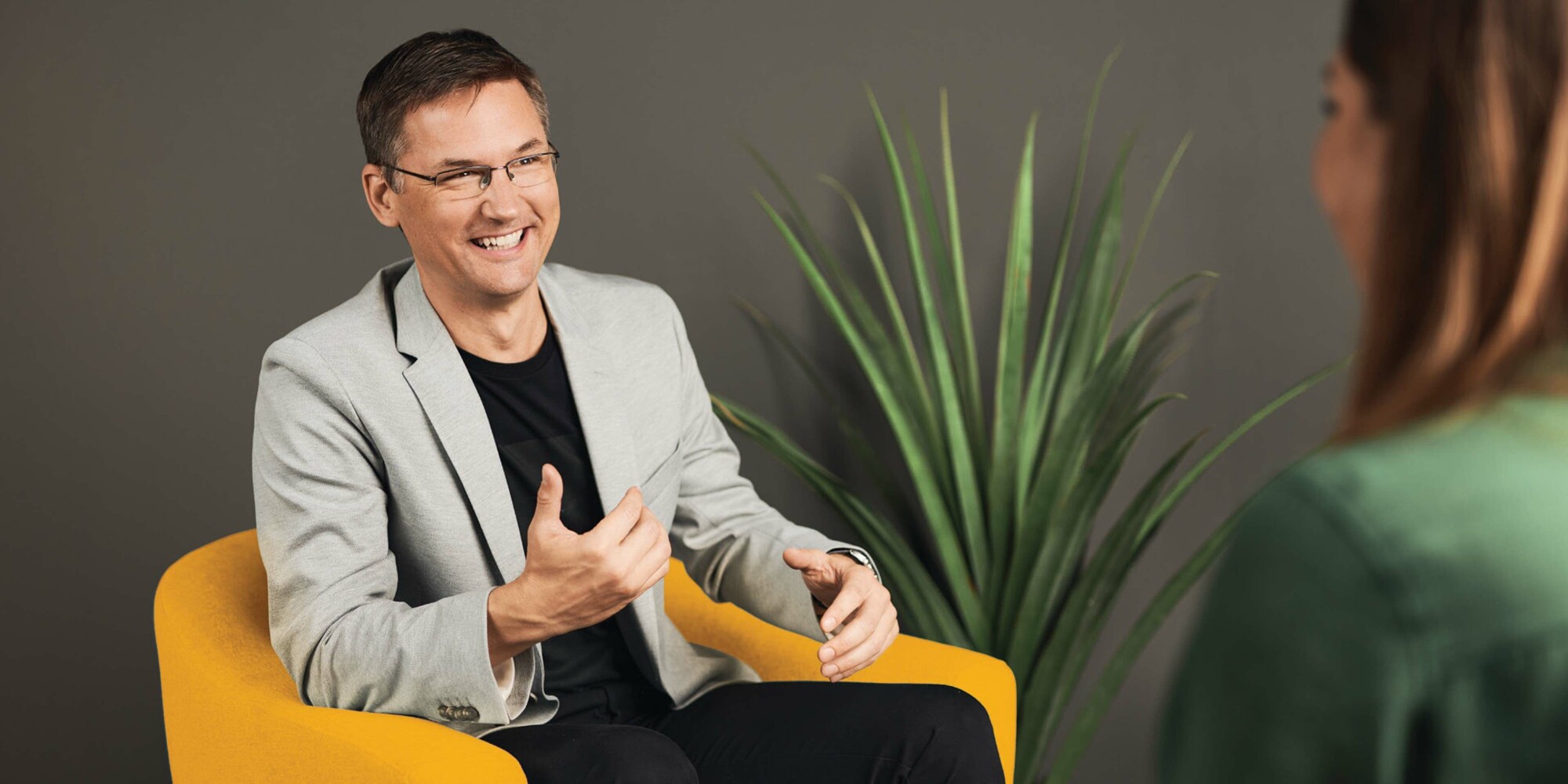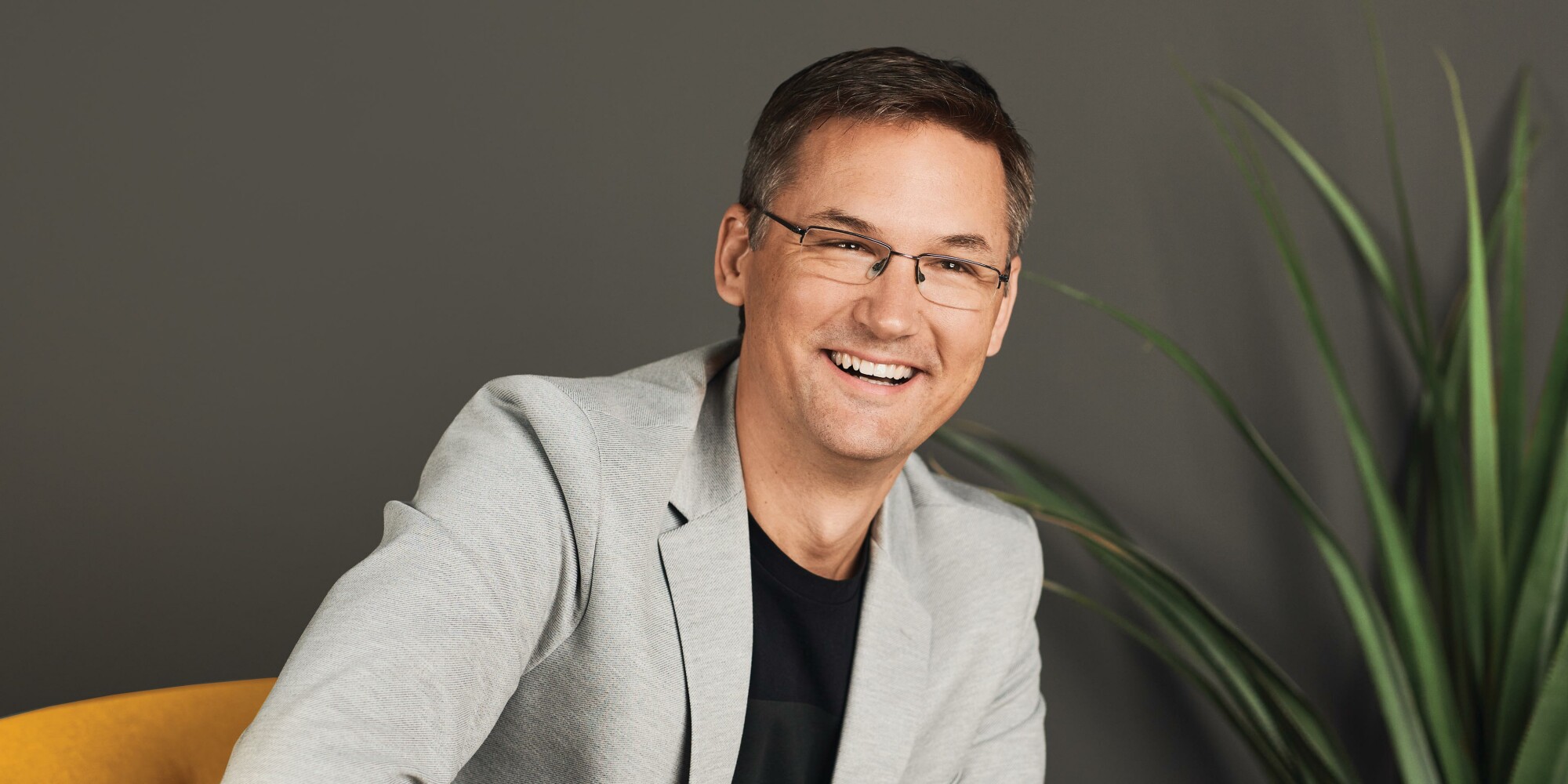Interview
You learn more if you allow yourself to fail

In our fast-changing world, the winners of the evolutionary struggle will be determined by the level of responsiveness and ability to adapt to change. We talked to Klemen Geršak, Digital Marketing Executive at Lesnina XXXL, about the ways to build a culture of flexibility and recognising future customer experience trends. You’d be hard-pressed to find a more suitable person to talk to, one that believes in the importance of agile learning, lives his philosophy, and is not afraid to try new things. But only if he has something to learn from it.
In Lesnina, you approach digital channel management in a strategic and well-thought-out way. Is this your company's business orientation or the digital team's ambitions?
Online retailing and communication are very high on the priority list for both the company and the team. One of the things that prove this are our investments, which are sizeable, especially considering the very traditional industry and also compared to other companies. The entire XXXLutz group is digitally oriented, so we have specialised departments that encourage us to focus on development and research locally. For example, in Germany we have a team of people just for SEO and also a web analytics team. Our consultants can communicate directly with them, which is great.
For a successful digital strategy, you need to know yourself, your environment and your competitors really well. Where do you invest most energy and how do you decide what to focus on to keep it all manageable?
We keep a close eye on each category and respond differently to each. When it comes to vases, for instance, the shopping journey is totally different than when it comes to kitchens or sofas. And the competition in likewise very different. We only follow what's on the Slovenian market, although I believe that many Slovenians shop from foreign furniture retailers. Unfortunately, no one keep tabs on this. In the Slovenian market alone, there are over 150 furniture retailers (including online specialists).
The test-and-learn principle is very typical of your digital channel management. What are the golden rules you follow and what are the prerequisites for successful practice?
Two things are the key to success. The first one is the management's interest. It's vital for decision-makers to want to try new things, even if they might fail. And the second one is to have a team that shows initiative, makes data-driven decision, and has the management's trust. I’m lucky that I and the director are very compatible. We both want to experiment and find the optimal solution for almost everything we do. I recommend this to other companies too. And if none of the leadership team members have such personality traits, you should find someone who does, and give them the opportunity to do so. But also the possibility and responsibility to make mistakes now and then.
And if experimenting does not produce positive results? Do you consider this failure?
No. I find this the best things. Considering everything we’ve tried so far and learnt from it, I’m happy no matter whether it was a good or bad thing for us at the time.
It's vital for decision-makers to want to try new things, even if they might fail.
How far are you willing to go when it comes to taking risks? Care to mention something you've experimented with recently?
I think we have very clear limits. We experiment with the budget allocated to it. We limit ourselves to the budget that is still acceptable for a particular category, channel and period. The budget is set on an ad hoc basis, depending on what we want to experiment with. Over the past year, we have dedicated a lot of time to finding the optimal SEA-SEO balance, and found that it was not worth investing more and more in SEA. We sparked off a regional debate between Innovatif's consultants and in-company experts in SEO and performance (both marketing and e-Commerce). Working with Innovatif, we thus brought SEA to a very high level and set up a very fragmented, complex yet effective system.
Do you think that the responsiveness and flexibility that come with the test-and-learn principle is what helped you during these changing times?
One of our company's advantages is our extremely flat organisational structure, which means decisions can be made very quickly. And the fact that we are used to the test-and-learn principle has helped us make faster decisions and manage digital communication independently during the lockdown. It was much faster and easier for us to make rather important decisions about where and what to advertise, where and what to communicate, what to promote etc.
Can you describe the most typical online shopping habits? What are the most popular things to buy online, did anything change when brick-and-mortar shops were closed?
I didn’t expect such strong online sales. In all categories. The number of loyalty card holders increased, order amounts increased, and consumers' interest in online shopping also increased. However, certain categories of products sell much better in stores than online. Made-to-order goods are sold in significantly smaller quantities online, which makes sense as we have no tools for customers to easily put together what they like and then order it. I was also surprised at how many kitchens were sold online nonetheless.
Research has revealed an increase in digital literacy and online shopping in 2020, especially among the older generation. Will this give a significant boost to online retailing?
The coronavirus period was the reason the Slovenian market, and the global one too, gained a huge number of new onlin customers. Consumers who experienced online shopping for the first time and will continue to use it. During the first wave, we went back a few years and explained the basics of online shopping. We spent lots of time on consumer education. I can't really say that online shopping is limited to individual generations, segments. There are no more differences. The key distinguishing factor is how computer and digitally literate people are. Online shoppers – regardless of age or segment – have high expectations; they are more discerning and want a different treatment.
Over the past year, we we have dedicated a lot of time to finding the optimal SEA-SEO balance, and found that it was not worth investing more and more in SEA.

Customers want an increasingly seamless experience, a simple transition between the physical and digital worlds. How has Lesnina
adapted to this?
The entire group is working on being a multi-channel business, so it doesn’t matter where you started your purchase, got a quote, filled out your shopping cart and where you will complete the purchase. You can make a list of products online, book them and then pick them up and pay in the store. And vice versa. Most of the store price labels include a QR code, which you can use to look up a product online and buy it there. So both directions are roughly supported. We are, however, working on making it possible for customers to get all the chosen products together in one place and then complete the purchase at will, no matter where they started it.
You mentioned some tools available to users that will be crucial for online retailing, such as configurators. What trends do you think will be the most important and are users already mature enough for them?
I'll start with the last question – no, they’re not mature or ready. Slovenian customers tend to favour getting advice in person as opposed to via machines and impersonal shopping. In the long run, however, these tools will be a competitive advantage. Digital/remote sales assistants or configurators that are simple and clear enough for users to get a product that meets their individual needs and complete the entire purchase using any channel they want. The thing that furniture buyers will need in the future is answers to the following questions: “This is what my room looks like, what can I do?” or “This thing has been damaged/has broken down, what can I replace it with?” Live remote assistance and a combination with image search and augmented reality (AR) will be vital for this. The problem in the furniture industry, however, is that manufacturers don’t offer equate content for their products. And for retailers the cost of it (e.g. 3D product models) is too high for something like this to pay off. Unless furniture and home accessories manufacturers offer this, it won’t spread. I believe that this is the biggest challenge and that neither customers nor the industry is ready at the moment.
What are you focused on - what will you invest in first?
To a certain extent, we cover all major trends. Well, AR to the smallest extent because of the aforementioned challenges. Image search for similar products or a combo of colours in different categories is already available, as are sofa and kitchen configurators, which have been put to good use. Our stores receive kitchen layout drawings drawn by customers themselves on a daily basis.
We're working on making it possible for customers to get all the chosen products together in one place and then complete the purchase at will, no matter where they started it.
Do these configurators bring customers to the checkout?
In practice, this doesn't happen much as customers like to get an expert opinion and adjust the final product accordingly. Especially when it comes to kitchens, which is quite a complex category. And the more you opt for convenience, automation and high quality, the more upselling opportunities there are. The purchase goes something like this: "Really? Really – I appreciate it... Really? – Yes, I'd like this too (the price goes up), aha, okay – not this..." Until you get to a price that you're ok with. I'm very grateful that I trusted the sales assistant and ordered a foot pedal trash can with my first kitchen. I was thinking, "You open it with one hand, throw trash in with the other – you have two hands!" But when I got to a kitchen that didn't have one, I was totally lost. It’s crazy how useful and convenient certain things are. So you need proper advice.
Let’s round the interview off with something you did last year that was very successful and that you're especially proud of – what would you choose?
I'm thrilled that in March, when we went through the first lockdown, we completely stopped our search engine advertising to find out what happens if the market remains the same or if the focus is on SEA and we're not doing it (or we're present organically). Through this experiment, we gained lots of knowledge and made new decisions. There were noticeable differences in both website traffic and sales (not necessarily poor results). We learnt how to find the right balance between organic and paid search presence so that advertising does not encroach on organic presence. This realisation was the most valuable thing and resulted in a completely different future strategy.
Slovenian customers tend to favour getting advice in person as opposed to via machines and impersonal shopping.
Based on your experience so far, how do you seek balance between SEO and SEA to make sure your investments are wellthought-out?
I believe exchanging knowledge with peers is very important and I encourage it. That’s why I love sharing my experience and I see no reason to hide it as this is how the entire industry can advance. To sum up, I think the following three things need to be explored for each advertiser to respond suitably: whether branded advertising pays off, how much to advertise considering the competition and organic traffic, and what happens if you don’t do search engine advertising.
Fresh articles are on the way! Sign up for news!